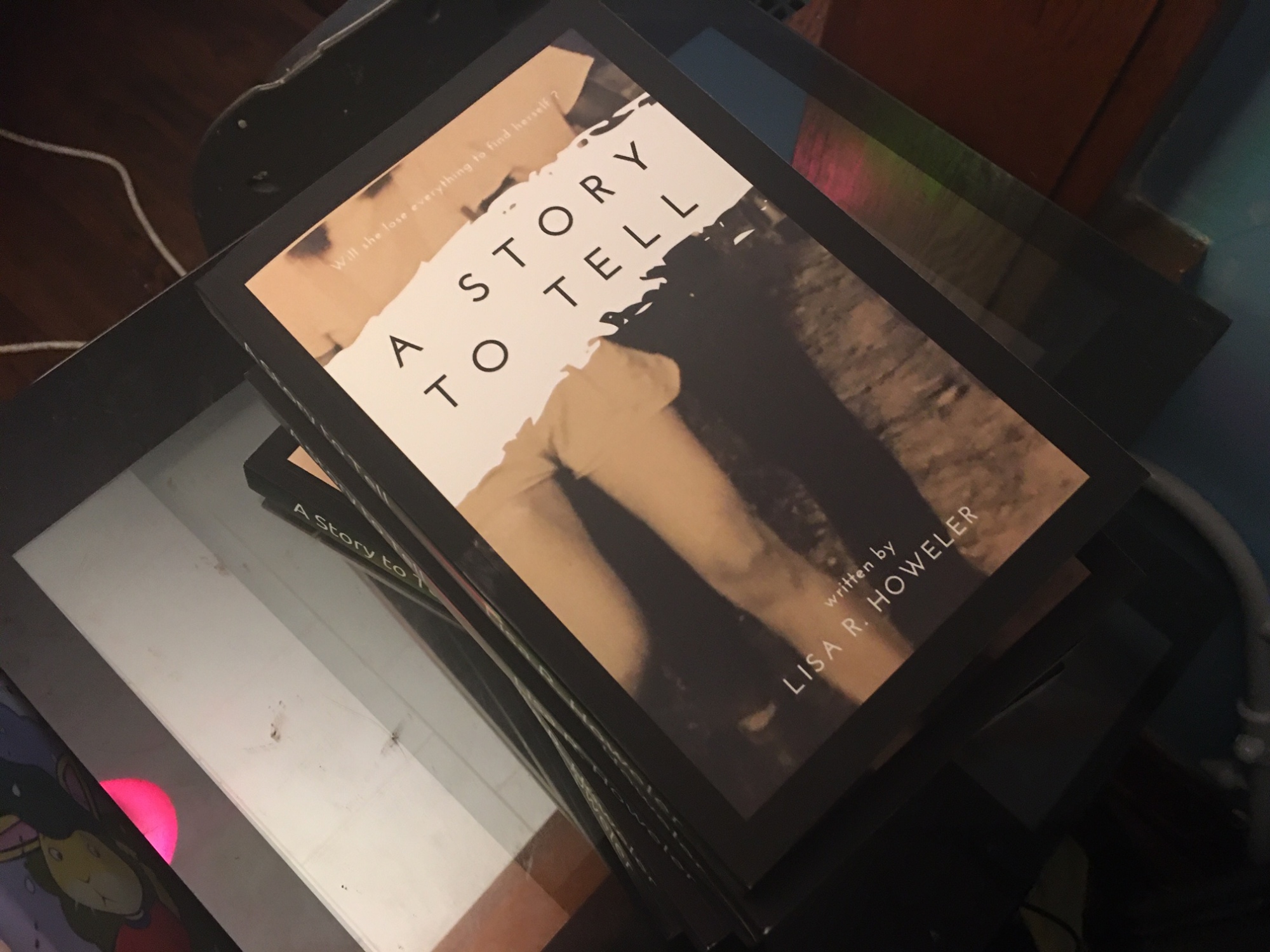It’s happening.
I’ve hit a wall in my novel.
My second novel, A New Beginning, the sequel to A Story to Tell, is much more of a challenge than the first.
My husband keeps saying I need to take a break from it and walk away but he doesn’t understand that in my head these are real people and I need to find out the ending to this chapter of their lives! How can I do that if I don’t sit down and let them talk to me? Only they won’t talk to me! Why won’t they talk to me?!
The main two challenges with this sequel are that I am writing in first person again and the second is that I’ve gone off-script in that my first novel was based on a true story and the second is completely going beyond my knowledge of the original story.
Some writers, who are plotters, would say I’ve hit a wall because I don’t plot down to the last period, but I don’t like to plot that extensively. Plotting in such a detailed way takes the fun out of writing for me. To me, once the details are on the page, fully written out or not, I’ve lost interest because the story has already been told. In other words, I’m a panster because I feel like the characters are telling me the story and I’m just transcribing it as I got along.
Despite the fact I’m not a seasoned novel writer, I’ve learned and discovered some tips to help me through this bog or over this wall and thought I’d share it here for others who might be writing a novel or any other kind of book.
 1. Do what my husband said (eye roll) and take a break from your current Work In Progress (WIP)
1. Do what my husband said (eye roll) and take a break from your current Work In Progress (WIP)
Go work on another writing project or no project at all. Put your current project aside for a couple weeks or, if you aren’t on a deadline, a couple of months.
This week I’ve put A New Beginning aside for a couple of days and continued working on my third novel The Farmer’s Daughter, which is spawning ideas for a series (The Spencer Valley Chronicles). The Farmer’s Daughter is written in the third person, versus first-person like A Story to Tell and A New Beginning and it’s about a young woman named Molly Tanner who wonders if the world has anything to offer for a 26-year old with little life experience beyond her family’s farm and her small Pennsylvania town. Farmhand Alex Stone, drama with her best friend, and her father’s struggle to keep the farm running will distract Molly from wondering about life beyond the farm.
2. Develop your supporting characters. This was a suggestion from Jess Zafarris in an article on Writer’s Digest. Zafarris, drawing from author and podcast host Gabriela Pereira’s book DIY MFA, suggests telling more about the side characters in the book who support your protagonist. You should make sure these characters enhance the journey of your main character and help bring you closer to the ending you hope for your novel to have.
For me, this has meant writing about how Blanche relates to others in her life – from her sister Edith to her parents (especially her dad) and her best friend Emmy. Of course, I’ll also have to write a little about Hank, her son Jackson, and certain other individuals who might pop up as any type of love interest in her story. Ahem.
3. Define who your character(s) is/are. If you haven’t already, write down a paragraph about your protagonist and his/her characteristics that will help push you through the middle. For me this is close to plotting, but not quite. I ask myself “what would Main Character (MC) do? What does MC like? What issues does MC have in this book that we can address in this middle section.” So far, it’s working and it helped me push through a couple plot points that had me stuck.
4. Use the midpoint of the story to focus the story. Another suggestion from Zafarris is to use the midpoint of the story to focus your story. You can do this by reaching a climax of sorts in the story that will continue to propel you toward your conclusion. One way to craft this high point in a story is to make it seem your MC has reached their goal or has completely failed at it, Zafarris says. To me, this seems a bit cliche, but at the same time, I see what she’s getting at.
“Though they might seem opposite, the temporary triumph and the false failure share a common thread: In both cases, the external events lead to an internal moment where the protagonist must decide how she feels about the person she has become,” Pereira writes. “This introspection may be a complete turning point where the protagonist reconsiders every aspect of her personality … [or] a slight shift. … As with any aspect of a good story, the external events need to reflect and contribute to the internal journey that eventually makes the protagonist grow and change.”
5. Daydream. This one is the simplest for me since a lot of my scenes play out like movies in my head. I try to give myself time to daydream, which usually happens at night. Daydreaming isn’t hard for me because I seemed to always float through life while living in my head when I was a kid and that’s been something that has translated into adulthood as well.
I think about my characters and what situation I need them to work through and then from there, my brain will jump to a conversation they might have with another character, which spurs an entire scene playing out in my mind. The only problem with this process is that the daydreams often come late at night for me so there I am at 1 a.m., sitting up in bed, grabbing my phone and jotting down the scene I started creating in my mind. As I’ve mentioned before, this way of writing a novel can make some days hard to get through, but it’s simply how and when my creative brain works.
6. Review parts of your novel that are working and you like. This suggestion came from Writers Relief.com, which suggests waking up your creative mind for that hard middle section by re-reading the parts of the novel that work for you. By reading those sections again you may find a way to write the middle of the novel, needed to help build up to or around those moments you find complete already. After all, the idea of a novel is to build a story. This is something I keep reminding myself. When I write a scene I really enjoy, I tell myself that I can’t simply rush to the next scene I like because there needs to be some story building, some pulling in of the reader that makes them feel like they are on an enjoyable walk and not a high-speed roller coaster ride to the end. Of course, if you’re writing a thriller or a mystery, you might want the high-speed aspect, but for me, with my slower paced, clean romances, I prefer a leisurely, yet still interesting stroll.
7. Read the works of others you enjoy and even some you don’t. When you read a story you enjoy this can help give you ideas for your own story, not by stealing ideas but by inspiring you through your own character and their situations. Reading a good book is also a nice distraction from your struggles with your novel. The story in the book you choose to read can help clear your mind and show you what you can and should do with your story.
Reading stories you don’t like can also help show you what you do not want to do in your own novel. If there is a plot twist or a weak character development, you will see it as something to steer clear of in your own writing. Or maybe the book is a popular and well-received one but you know it’s still not how you want to write your own book. Either way, it can help define how you get through the rough spot of your novel.
8. Write a synopsis of your story. As novel writers know, a synopsis is a summary of what your book is about. Writing this can help you to hone what scenes you still need or may need to eliminate from the book to make it more concise and carry your story forward. You’re going to need this later anyhow, whether you go the traditional route and send the synopsis to a literary agent or go the indie publishing route, like I did, and toss your book up on Kindle.
9. Try writing prompts related to your WIP and your MC.
Instead of using a writing prompt to kick start a flash fiction piece or a novel, use the prompts to ask yourself things like “What would happen if my MC did this instead of this?” or “What if this person said this or that to my main character?” Imagining other scenarios for the outcome of your novel could help to pull you out of the writing rut as well.
10. Do something physical, completely unrelated to writing. This is similar to get up and walk away from your project for a while. Go for a walk, a run, a swim, anything to get your body moving, your endorphins flowing, and your brain off your story. Or, maybe your brain will be on your story as you walk and something will break loose and help you carry forward.
For extra information on overcoming writer’s block, I’ve included this link to best-selling author Jerry B. Jenkins talking about how to overcome it. Please try to ignore how the camera is focused on the books behind him for most of this video. The advice is very good, despite that odd recording blip.
Lisa R. Howeler is a writer and photographer from the “boondocks” who writes a little bit about a lot of things on her blog Boondock Ramblings. She’s published a fiction novel ‘A Story to Tell’ on Kindle and also provides stock images for bloggers and others at Alamy.com and Lightstock.com.

Yes I agree. Let yourself take a break. Read a few books over the next week or two. Often when I see what another author has done with their story, it gives me an idea on how to move on from a place where I am stuck!
LikeLiked by 1 person
That’s what I’m hoping happens for me! I am unstuck from the one part at least!
LikeLiked by 1 person
Don’t you hate it when the husband is right? Lol Take a break, take a walk and daydream all at once. They’re still there and they’ll come to you when your head isn’t full of everything else you have going on right now. Wishing you all the best!
LikeLiked by 1 person
Thank you and yes, I do hate that. Lol
LikeLiked by 1 person
I don’t think I could ever write a novel. It seems completely overwhelming! I’m really amazed by people who can do it.
LikeLiked by 1 person
It’s not so bad if you take it one chapter at a time, which is what I reminded myself this week when I got overwhelmed with it all.
LikeLiked by 1 person